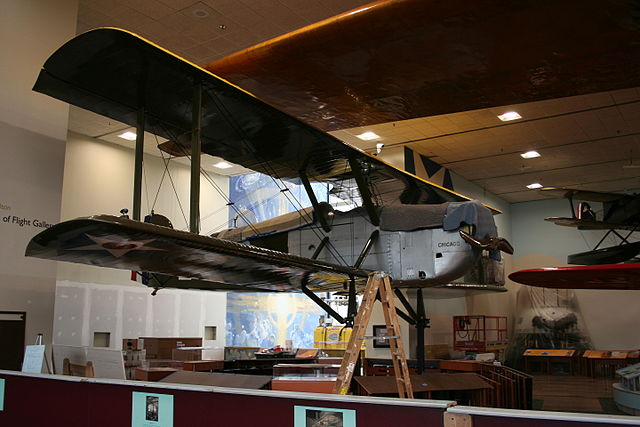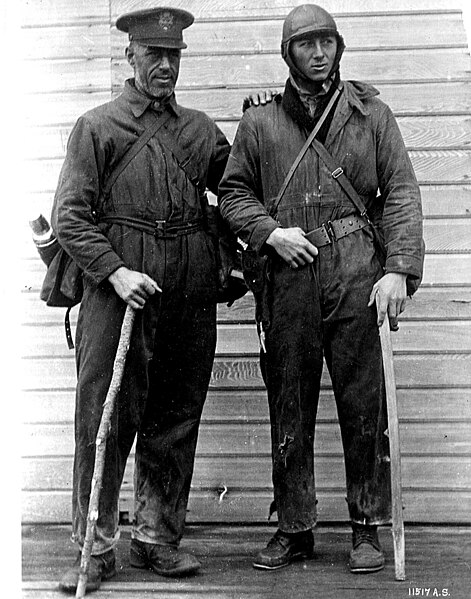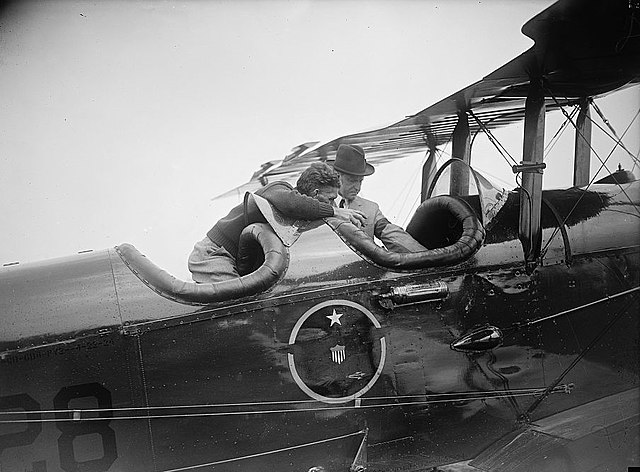The Douglas World Cruiser (DWC) was developed to meet a requirement from the United States Army Air Service for an aircraft suitable for an attempt at the first flight around the world. The Douglas Aircraft Company responded with a modified variant of their DT torpedo bomber, the DWC.
Douglas World Cruiser
Chicago, 1924
Douglas Aircraft Company's logo was later changed in commemoration of the first aerial circumnavigation.
The Chicago undergoing restoration while at the National Air and Space Museum
First aerial circumnavigation
The first aerial circumnavigation of the world was completed in 1924 by four aviators from an eight-man team of the United States Army Air Service, the precursor of the United States Air Force. The 175-day journey covered over 26,345 miles (42,398 km). The team generally traveled east to west, around the northern-Pacific Rim, through to South Asia and Europe and back to the United States. Airmen Lowell H. Smith and Leslie P. Arnold, and Erik H. Nelson and John Harding Jr. made the trip in two single-engined open-cockpit Douglas World Cruisers (DWC) configured as floatplanes for most of the journey. Four more flyers in two additional DWC began the journey but their aircraft crashed or were forced down. All airmen survived.
The aircraft shown here, Chicago, led the first round the world flight in 1924.
Pilots of the 1924 Round The World Flight
Major Martin and Sergeant Harvey at Port Moller after crash of the Seattle
U.S. President Calvin Coolidge inspected the planes when they landed in Washington, D.C., toward the end of the tour in September 1924







